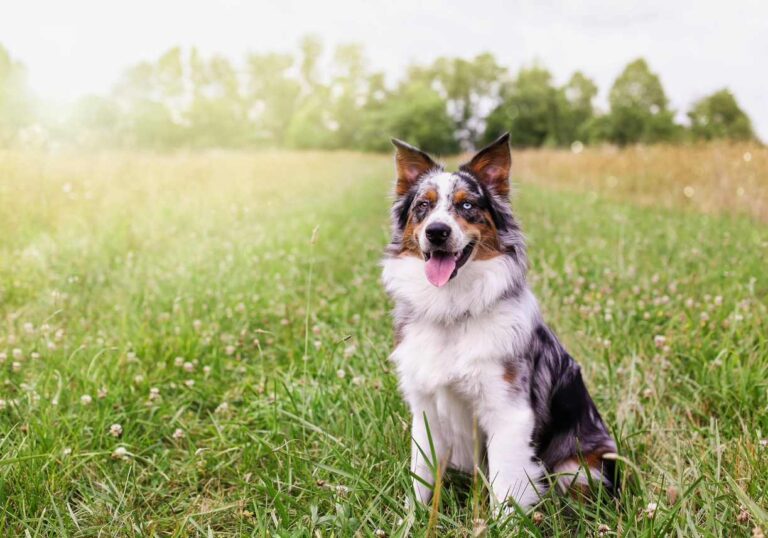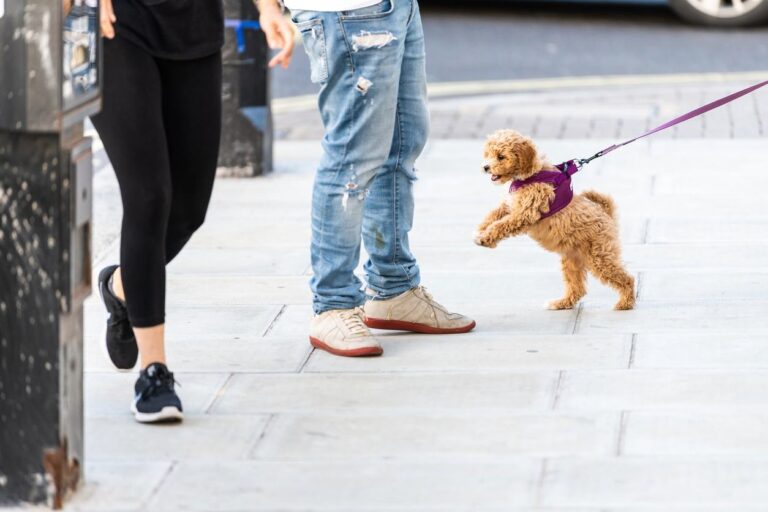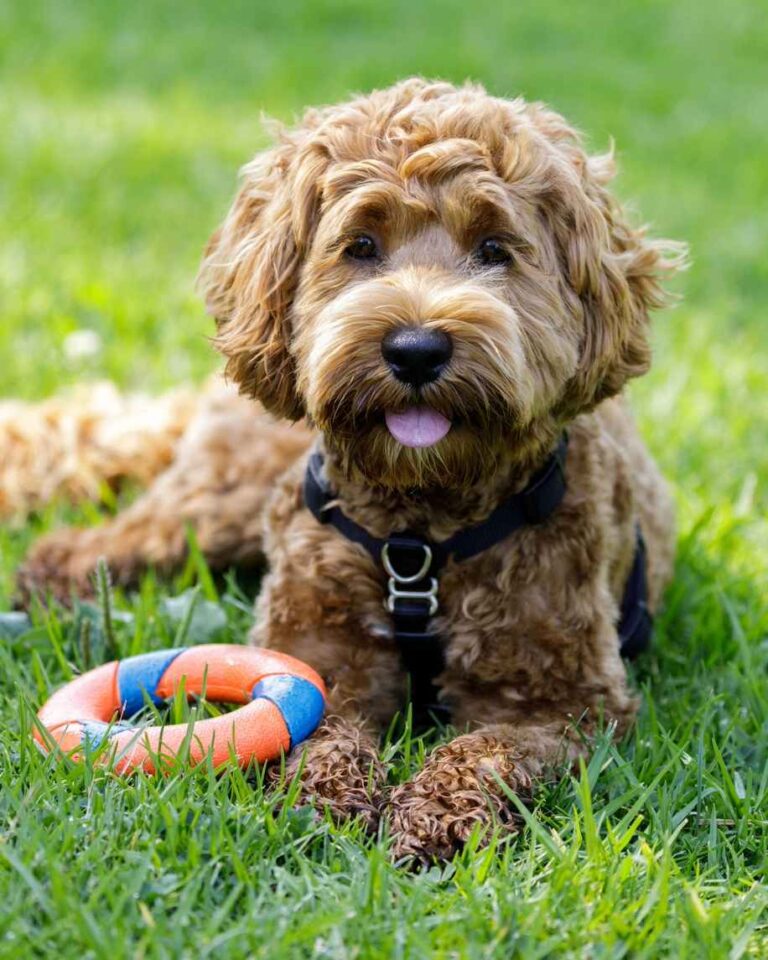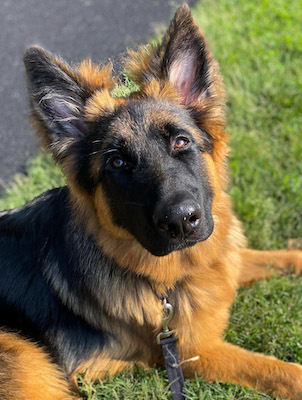
When teaching a new command to your puppy, you want to train in a way that makes the most sense to how puppies learn. Does your puppy sit every time you say sit in your home but the second you step foot out of your house or are in front of another dog or person, it seems as though everything they have learned goes out the window? Fix this by practicing the 5 D’s!
When it comes to training your puppy, you must remember the 5 D’s if you want your puppy to listen to you regardless of your environment. The 5 D’s, essential tools for any dog trainer, are distance, duration, distraction, direction, and disappearing. Each of the D’s plays a role in your puppy’s overall success when learning a new command. Let’s go over each one of the 5 D’s, and how you can use them to best train your puppy.
The 5 D’s of Puppy Training: Distance, Duration, Distraction, Direction, and Disappearing
Distance:
Distance refers to the amount of space between your puppy and something else or yourself.
Distance can be how far your dog is away from stimuli, such as another dog passing by or a squirrel in a tree. However, distance can also refer to the amount of space you have created between yourself and your puppy! In both scenarios, it is important to give yourself measurable goals when it comes to distance so that you can know how to make a training scenario easier, or more difficult for your puppy.
Distance Examples:
- My puppy is 20 ft away from a dog and is only listening to the sit command 25% of the time. We move to 25 ft away from the dog until my puppy is listening to sit almost every time I ask. Then I try 20 ft again, then 15 ft, then 10, etc.
- I asked my puppy to “down” while I was standing 5 ft away from them. My puppy listens 90% of the time so I try again 10 ft away. Once they are reliably listening at 10 ft away, I go 15 ft away, then 20 ft away, etc. until my training goal is achieved.
We recommend working your way up in 5 ft increments. If your puppy is struggling, make an adjustment and practice at the new distance until successful.

Duration:
Duration refers to the amount of time in which a behavior continuously occurs. For example, your puppy can hold a sit stay for 30 seconds, and stay on place for five minutes.
When practicing duration, always start by reinforcing your puppy for holding the position for a short amount of time. We recommend 10-15 seconds in the beginning.
Duration Examples:
- Ask your puppy to sit, tell them to stay, and then give them a treat every 3-5 seconds they stay. Free your puppy after 10-15 seconds.
- On the next trial, try to increase the time they hold it to 20 seconds, then 30 seconds, etc.
- Once they are successful, wait to feed after longer periods of time. Rather than feeding every 5 seconds, feed every 10, 15, etc. eventually fading out the food.
Be sure to give your puppy a realistic and measurable goal. Remember that you can always increase or decrease that goal if it’s too easy for your puppy or if they’re struggling.
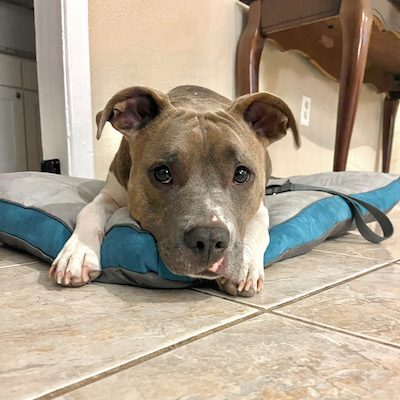
Distraction:
It’s a bird, it’s a plane! Whatever it is, distractions can add an additional layer of difficulty to a training scenario. A distraction is any stimulus that draws attention away from the task or behavior at hand. Great distractions to practice with include people, dogs, cats, small animals, children playing, cars, or any loud noise.
When teaching a new behavior, you always want to start in an environment where there are limited or no distractions. Inside the home is perfect! Once your puppy has mastered the skill in the home, move on to the backyard. Then move to the front yard, then the neighborhood, and eventually the park.
Start with mild distractions such as you making a kissy noise and work your way up to moderate distractions such as a dog walking by on-leash across the street. Once your puppy is fully prepared for advanced distractions, you will be able to get your puppy successful in the presence of high stimuli, like a busy park.

Direction:
A less talked about training component, direction, refers to the physical course you are moving in or your body position in relation to your puppy. You might think that direction doesn’t make much of a difference but as dogs are masters of reading our body language, facing towards them versus facing away from them can make the world of a difference.
Direction Examples:
- The direction you walk to and from (walking the same path)
- The location you stand in (near the front door, behind the counter)
- The direction you face (left, right, turned backward)
- The direction a stimulus is approaching from (across the street, surprise from behind you)
When we are teaching a behavior, consistency is key! However, it is important once a puppy has mastered a skill, for them to be able to comply with a command after you’ve moved to a new position. To help, practice asking your puppy to sit from prompts given in novel positions such as sitting on the couch, lying on the ground, walking to the left, walking to the right, turning your back, etc. We also recommend practicing around stimuli that may “pop up” and surprise your puppy. The aisles of a dog-friendly store are a great place to practice preparing your puppy for the unexpected.
Standing still and directly in front of your puppy will be the easiest and asking from a distance while your puppy is not looking at you will be more challenging.

Disappearing:
The final D is disappearing, which in dog training terms refers to going out of sight from the puppy.
Disappearing Examples:
- Asking your puppy to go to place, and then walking around the corner of your hallway out of sight.
- Hiding behind a large tree in the backyard and prompting a command such as “come”
Disappearing is one of the most difficult D’s as it takes a bit of impulse control. Use the same reinforcement schedule that we discussed in the duration section above. Practicing disappearing can be great mental stimulation and will help develop trust between you and your puppy! If you are going out of sight, make sure that your puppy is on a long line or in an enclosed space and they aren’t left unattended for too long.

If you increase the difficulty of one of the D’s while training your puppy, you will likely need to decrease the difficulty of another. For example, don’t ask your puppy to down from 5 feet further away from when you previously practiced at the same time as not facing them for the first time. Focus on each training factor individually. Give your puppy attainable goals and most importantly, have fun with it! If you want to see the 5 D’s of puppy training in action, schedule a free consultation with our Co-Founder Sean Savage to enroll in your very own customized in-home Houston puppy training program.
*This page contains affiliate links. If you choose to purchase after clicking a link, we may receive a commission at no extra cost to you.*


